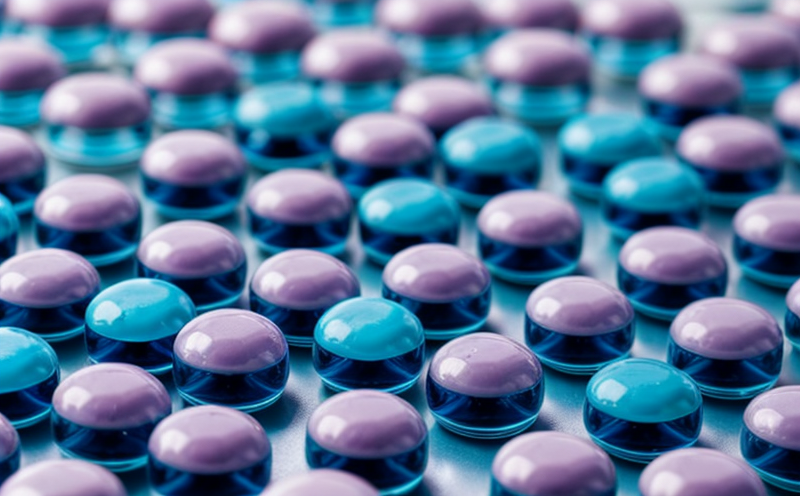WHO Guidelines Microbiological Quality of Pharmaceutical Water
The WHO Guidelines on Microbiological Quality of Pharmaceutical Water represent a critical standard in the pharmaceutical industry. Compliance with these guidelines ensures that water used in manufacturing processes meets the highest levels of safety and quality, thereby protecting public health. The guidelines are designed to minimize microbial contamination risks throughout various stages of production, including purification, storage, distribution, and usage.
The WHO's recommendations are based on a comprehensive review of scientific literature and expert consensus, ensuring that they align with global best practices in microbiological testing. This ensures the reliability and accuracy of results, which is essential for pharmaceutical companies operating in diverse regulatory environments. The guidelines cover several key areas:
- Water quality standards
- Microbiological parameters
- Sampling procedures
- Testing methodologies
- Monitoring protocols
- Maintenance and cleaning practices
The importance of pharmaceutical water cannot be overstated. It is used in the manufacturing process for active pharmaceutical ingredients (APIs), excipients, packaging materials, and other components that come into direct contact with patients. Ensuring the microbiological quality of this water is crucial to prevent contamination from pathogens such as bacteria, viruses, fungi, and protozoa.
The guidelines provide a framework for identifying potential sources of microbial contamination, assessing risks, and implementing control measures. This includes regular monitoring of water quality parameters such as turbidity, pH, conductivity, and temperature, alongside microbiological testing to detect the presence of viable microorganisms.
Pharmaceutical companies must adhere to these guidelines during all stages of production, from raw water intake through treatment processes to final product delivery. By doing so, they can ensure that their products meet stringent quality standards and comply with regulatory requirements, thereby safeguarding public health.
In addition to compliance with regulatory bodies like the World Health Organization (WHO), pharmaceutical companies also need to consider internal quality management systems (QMS) and Good Manufacturing Practices (GMP). These systems help maintain consistent product quality and ensure that all processes are documented thoroughly. Regular audits and inspections by independent third parties further reinforce this commitment to excellence.
Implementing the WHO Guidelines on Microbiological Quality of Pharmaceutical Water requires careful planning, implementation, and continuous improvement. It involves selecting appropriate analytical methods for detecting microorganisms, establishing limits for acceptable levels of contaminants, and ensuring that all personnel involved in handling pharmaceutical water are trained appropriately.
Why Choose This Test
- Compliance with International Standards: Adherence to WHO guidelines ensures that your pharmaceutical water meets the highest standards set by leading global health organizations. This is essential for maintaining consistent product quality and ensuring patient safety.
- Enhanced Patient Safety: By minimizing microbial contamination risks, you can significantly reduce the risk of adverse events associated with contaminated products. This contributes to improved public health outcomes.
- Regulatory Compliance: Meeting WHO guidelines helps pharmaceutical companies meet regulatory requirements in diverse markets around the world. This reduces the likelihood of non-compliance penalties and enhances market access.
- Increase Confidence Among Stakeholders: Demonstrating adherence to rigorous microbiological testing procedures instills confidence among customers, investors, regulators, and other stakeholders. It highlights your commitment to quality and safety.
Choosing a laboratory that specializes in WHO Guidelines Microbiological Quality of Pharmaceutical Water ensures you receive accurate, reliable results using state-of-the-art equipment and methodologies. Our experienced team of scientists and engineers is dedicated to providing comprehensive support throughout the entire testing process, from sample preparation to result interpretation.
Quality and Reliability Assurance
The quality and reliability of pharmaceutical water are critical factors in ensuring product consistency and patient safety. To maintain these standards, laboratories must adhere strictly to established protocols and use advanced technology for accurate measurements and analyses. Regular audits and inspections by independent third parties further enhance trustworthiness.
- Sample Preparation: Proper sample preparation is essential for obtaining reliable test results. This involves collecting representative samples from different stages of the production process, ensuring they are free from external contaminants, and storing them under controlled conditions.
- Analytical Methods: Advanced analytical methods such as quantitative PCR (qPCR), membrane filtration, and molecular typing are used to detect microorganisms and assess their concentrations. These techniques provide precise data that help identify potential sources of contamination.
- Data Interpretation: Skilled technicians analyze the collected data using statistical tools and compare it against established limits specified in WHO guidelines. Any deviations from these limits are reported promptly, enabling timely corrective actions to be taken if necessary.
In addition to internal quality control measures, external verification through accredited third parties adds another layer of assurance regarding the accuracy and reliability of test results. This ensures that pharmaceutical companies can confidently rely on their data when making decisions about product quality and safety.
Environmental and Sustainability Contributions
The pursuit of WHO Guidelines Microbiological Quality of Pharmaceutical Water not only enhances patient safety but also contributes positively to environmental sustainability efforts. By minimizing microbial contamination, pharmaceutical companies help reduce the overall burden on water treatment facilities and promote more efficient resource utilization.
Pharmaceutical manufacturers play a crucial role in sustainable development by adopting practices that protect natural resources while producing high-quality products. Adhering to WHO guidelines supports these goals by:
- Reducing Wastewater Discharge: Effective management of pharmaceutical water reduces the amount of treated wastewater discharged into ecosystems, minimizing environmental impact.
- Conserving Resources: Efficient use of raw materials and energy contributes to overall resource conservation efforts within the industry.
- Promoting Circular Economy Principles: By recycling and reusing water where possible, pharmaceutical companies contribute to a circular economy model that aims to reduce waste generation.
In conclusion, complying with WHO Guidelines on Microbiological Quality of Pharmaceutical Water is not only vital for maintaining product quality but also supports broader environmental sustainability initiatives. It demonstrates a commitment to responsible stewardship of natural resources and ensures long-term viability for both the industry and society at large.





